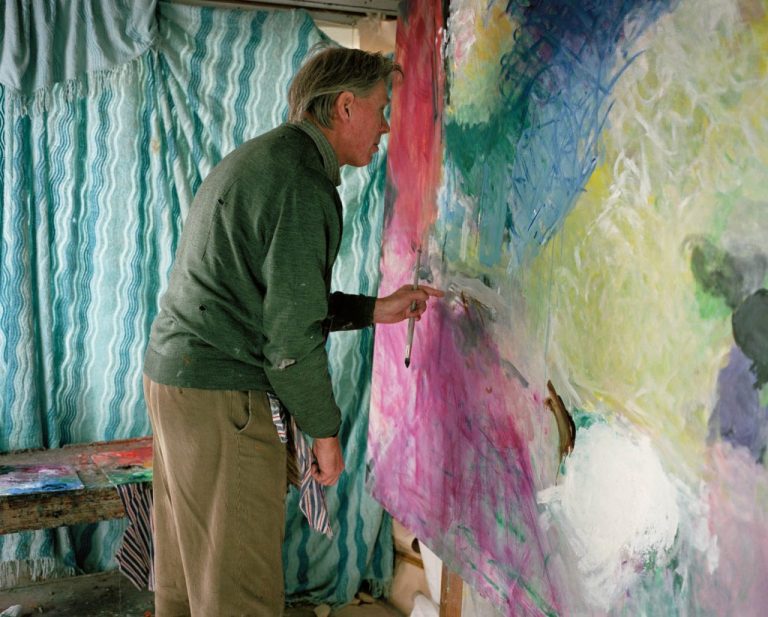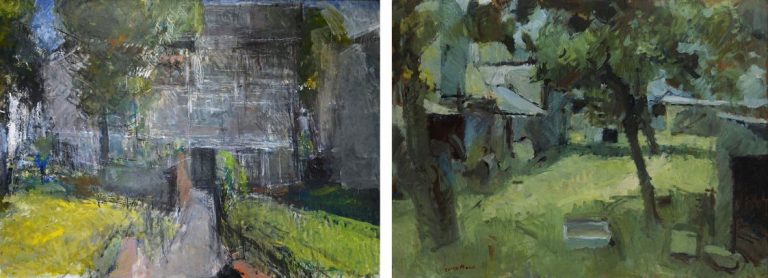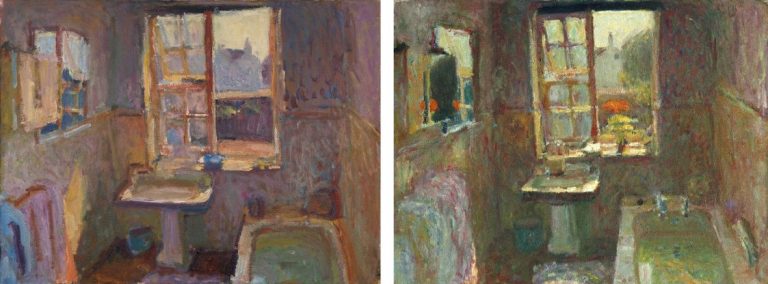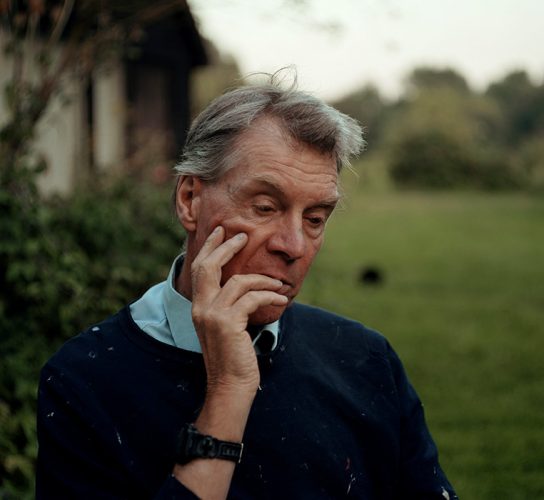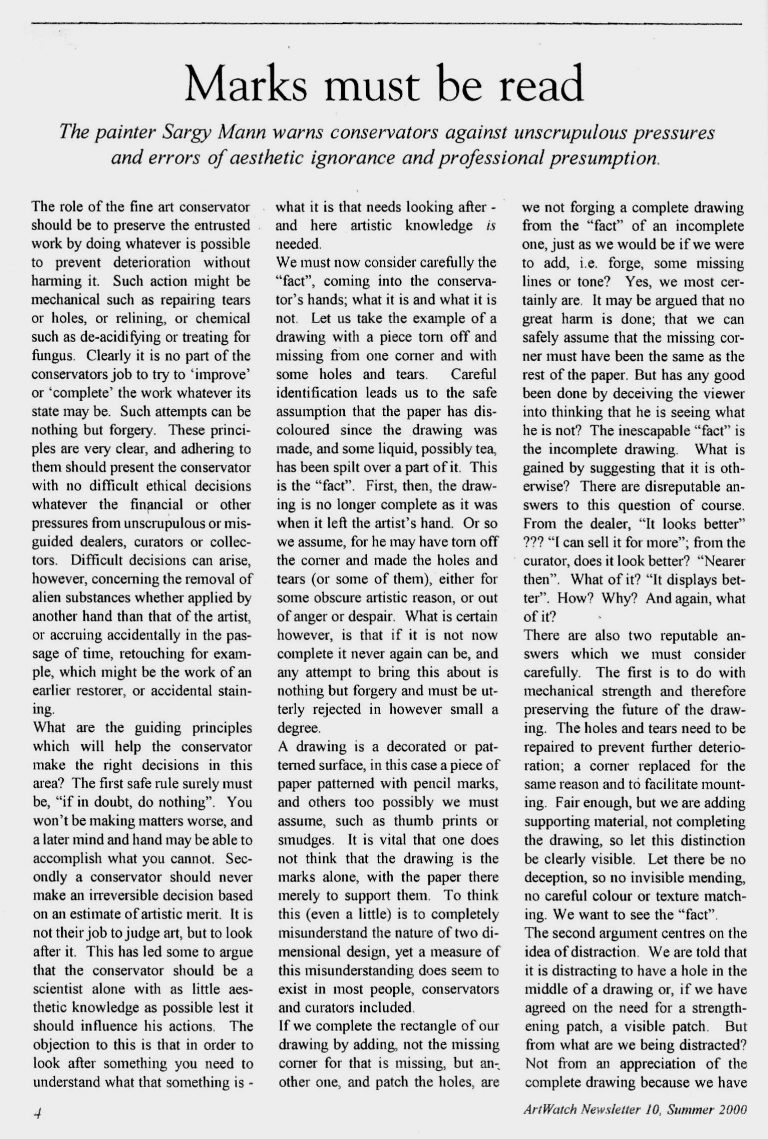Exhibition: Sargy Mann, Late Paintings
A most remarkable exhibition is running until March 10th at the Royal Drawing School (19–22 Charlotte Road, London EC2A 3SG).
Can a blind man paint? We would not ask if a blind man could think or feel. Sargy Mann saw, felt and thought when sighted. In a sighted painter, thinking and feeling are intensified by habit, by professional engagement and by sheer practice. By the concentrated act of painting, thoughts and feelings are imprinted, stored and collated in the mind and thereby provide templates and springboards for further artistic skirmishes. Mann showed through failing and eventual complete loss of sight that art is driven by minds; that powers honed through a lifetime’s practice are primarily imaginative, conceptual and, by no means, exclusively sight-dependent; that even a catastrophic loss of visual powers cannot thwart artistic will; that an artist’s mind is supreme.
Sargy Mann (1937-2015) continued painting for the last ten years of his life after becoming completely blind. We know that an artist can draw with his eyes shut; can draw unseen objects from memory; can draw non-existent imagined objects. Rodin made drawings without taking his eyes off moving figures so as to fix their transient, momentary essentials by a felt but, at the moment of execution, unobserved drawing. A newspaper illustrator once had to make drawings of actors in character during opening-night performances. Because being seen drawing would have constituted an offensive distraction, he carried a short pencil and a small sketchbook in a jacket pocket and drew, hand-in-pocket, as he looked, recording and fixing features in his mind’s eye. Afterwards, he was able to produce finished caricatures for publication from his un-seen but physically recorded observations and notations. We know, of course, that composers can write music when deaf. We have long known that artists have adapted variously to declining levels of sightedness. As Degas lost sight he turned from the depiction of figures to plastic realisations of them – but, then, he had also once claimed that he would have preferred to make his fabulous dancer drawings in monochrome and had only added pastel colours to encourage their sales.
This exhibition of a blind man’s late paintings testifies to a remarkable artist and artistic intelligence no less than to a tenacious and courageous spirit. Mann’s works, writings and lectures can be seen in an excellent dedicated archive but, if at all possible, this handsome sensitively arranged exhibition should not be missed. In it, the viewer can stand before the often large canvases and in, as it were, the very space which Mann had occupied when painting his spatially and pictorially arranged figures as if seen from nature when in fact deduced from tactile/spatial awareness and recollected experiences. It must have been the case that Mann was proceeding in many respects as before when sighted – certainly, there had always been a strong “mapping” organising and orchestrating imperative in Mann’s painting as well as his highly attuned receptivity to light-generated colours and surfaces, as can be seen in figs. 2 and 3 below.
One might have imagined that with the complete loss of sight, engagement with the transient, perpetually shifting consequences and effects of light would, of necessity, have atrophied. Not so. With Mann, in a most unprecedented and unexpected development, as the figures became more classically affirmative, self-contained and monumental, so too, the colour chords intensified to a remarkable vibrancy and forcefulness as seen below at Figs. 4 and 5. This is not an exhibition to miss but it does close on the tenth of this month.
CODA
Sargy Mann (above) was an early and long-supportive member of ArtWatch. His exceptionally acute art critical intelligence and conceptual adroitness was well in evidence when, in 2000 with already failing sight, he produced the cautionary essay below on the shoals and perils of restoring drawings:
Michael Daley, Director, 7 March 2019

